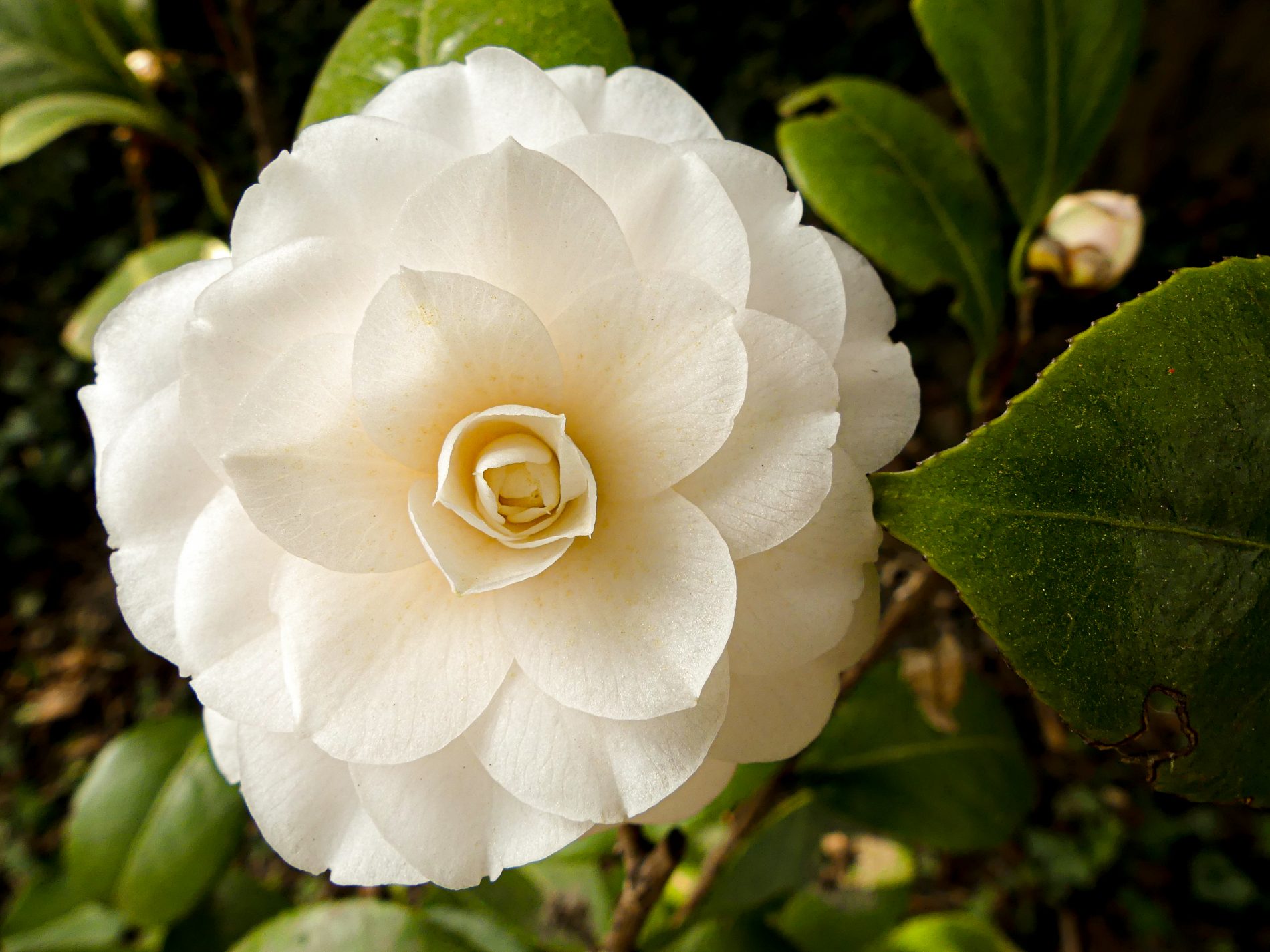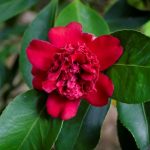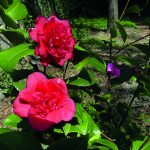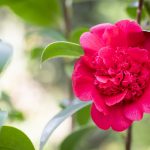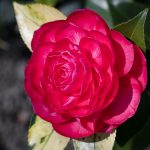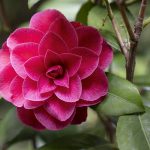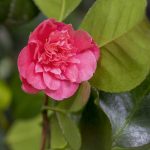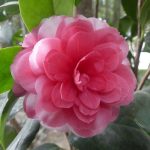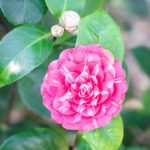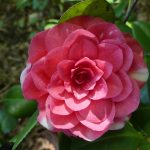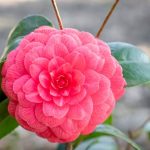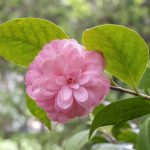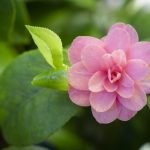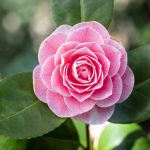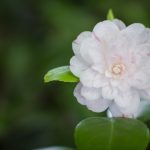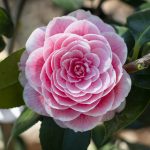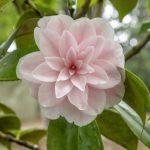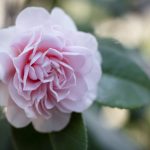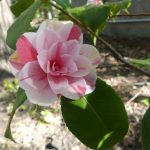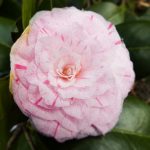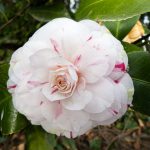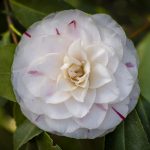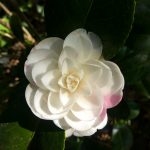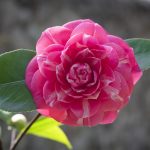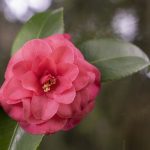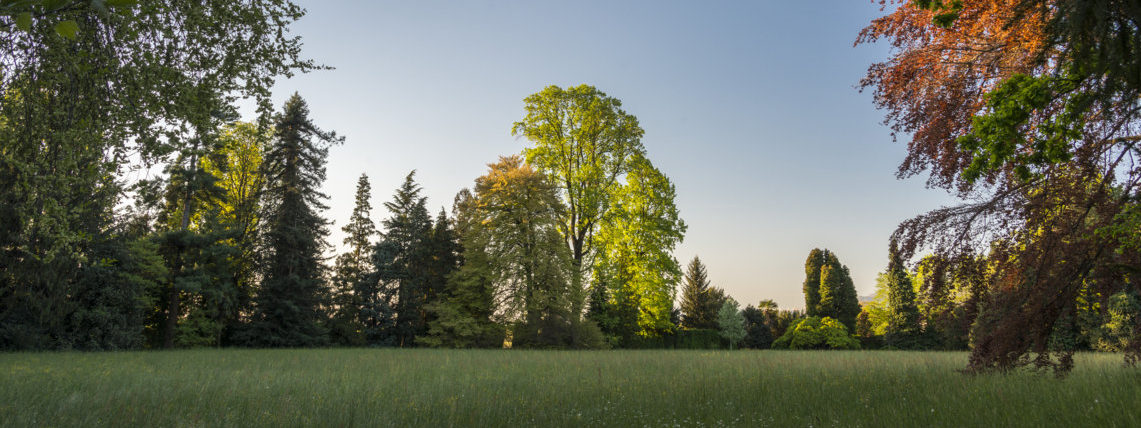42 Incarnata
CODICE: 42
Morphological characteristics
FLOWER
- FLOWER
- Formal double
- DIAMETER
- 6,5 – 7,5 cm
- DEPTH
- Formal double
- SIZE
- Small
- PETALS
- Number: 51 - 58
Shape: Rounded (outer petals), elliptical (inner petals)
Surface: Flat (inner petals), slightly convex (outer petals)
Margin: Slightly incised
Color: White-pale pink (155 B) - STAMEN
- Number: 0
Disposition: -
Filament’s color: -
Anther’s color: - - PETALOIDS
- Number: 0
Disposition: - - VARIEGATIONS
- Type: -
Color: -
LEAF
- LUNGTH
- 7,0 – 10,0 cm
- WIDTH
- 3,5 – 5,5 cm
- SHAPE
- Blade: Elliptic
Apex: Acuminate
Margin: Finely serrated - COLOR
- Upper page: 137 A
Lower page: 146 B
Plant observed
- Location
- San Secondo di Pinerolo, Park of Miradolo Castle (TO
- Number
- 42
- Origin of the mother plant
- Villa Durazzo Pallavicini (Genoa) – N. 97
- Blooming
- Period: Medium early Density: Low
- Where to observe the same variety
- Villa San Remigio (VB) Villa Anelli – Oggebbio (VB) Villa Bottini (LU)
Historical and bibliographical information
- Origin
- Chinese
- Year of constitution
- 1812 circa
- Breeder
- Unknown
- Synonyms
- ‘Blush’, ‘Blush Camellia’, ‘Buff’, ‘Buff Incarnata’, ‘Buff Pink’, ‘Buff-carnea’
- First known description
- Loddiges, 1818, Botanical Cabinet: “A formal double (…) Imbricated to give tiered or hexagonal form. Pale dawn pink.”
- Additional citations
- Chandler e Booth, 1831, Illustrations and Descriptions of the Plants which compose the natural order Camellieae Berlèse, 1843, Iconographie du genre Camellia, vol. II, pl.118. H.C. Andrew, 1812, Botanical Repository, vol. 10, pl.660. The Botanical Register, 1816. G. Cattolica, A. Lippi, P.E. Tomei, 1992, Camelie dell’Ottocento in Italia, p.74. Regione Piemonte, 2007, Camelie dell’Ottocento, vol II, p.50. 2012, Antiche camelie della Lucchesia, p.96-97.
- First known illustration
- Berlèse, 1843, Iconographie du genre Camellia, vol. II, pl.118.
- Additional illustrations
- B.L. Urquhart, 1956, The Camellia. E.G. Waterhouse, 1952, Camellia Trail, pl.VI.
- Notes and remarks
- This cultivar was brought to England from China in 1806 for Lady Amelia Hume of Wormelybury.
